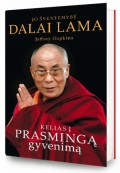 Authors:
Authors:
XIV Dalai Lama, Hopkins, Jeffrey
Translated by:
Jomantienė, Irena, Dyke, Milda
Translated from:
English
Published on:
2014
His Holiness the Dalai Lama has published many books, some for a general audience and others for those particularly interested in Buddhism. In this book he draws on a long tradition of spiritual practice in Tibet and on his own experience to offer suggestions on how to practice the spiritual path that will lead to mental clarity and emotional transformations. This is inspiring book of wisdom, love, kindness, personal moral practice. This book may indicate, how to live a meaningful life, how to find the love for every living creature, how to protect your mind and your thoughts from feelings such as distrust, jealousy and anger. The Book tells about the benefit of morality, about types of meditation, about the help for others, about Tantras. Book is full of exciting descriptions of the living conditions, extensive personal experience is used to explain or justify taught philosophy. The book offers a number of wise practical insight about the human spirit and desires. More
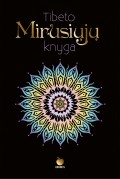 Translated by:
Translated by:
Kugevičius, Algirdas
Translated from:
Tibetan
Published on:
2014
“The Tibetan Book of the Dead” shows how Tibetan people understand death, past and future lives connection. It is a collection of Tibetan spiritual teaching and teaches us about journeys of death phases.
The book provides basic knowledge about Tibet, which helps better understand the country\’s beliefs, manners, culture and life. Tibetan civilization is unique, the locals believe that the inner and outer worlds are connected, and it is the main reason for the past and the future life connection. Tibetans have been focused on the inner life and its development since ancient times (they believe that personality development is endless). The inner life development was strongly influenced by Tibetan unusual nature – Himalayan Mountains, which encourages meditation and calmness. More
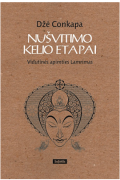 Authors:
Authors:
Tsongkhapa, Je
Translated by:
Kugevičius, Algirdas
Translated from:
Tibetan
Published on:
2013
Je Tsongkhapa (1357 – 1419) – famous buddhism teacher, in today’s Tibetan dominating virtous traditions founder (gelug), whose authority was acknowledged by another three Tibetan’s buddhism stream: Njingma, Sakja and Kagju. Tibetologists also call him buddhism reformer. During his lifetime he collected a lot of knowledge and experience, he even did miracles. Honorable Tsongkhapa had over forty teachers and left around two hundreds fifty students. The book „The … More
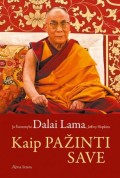 Authors:
Authors:
Hopkins, Jeffrey, XIV Dalai Lama
Translated by:
Sakalinskaitė, Ieva
Translated from:
English
Published on:
2011
Buddhist psychology deals with how the human mind works. The Dalai Lama applies these insights and helps readers to manage those processes on the basis of their own experience. He affirms that people distort their perception of the mind and the body, which induces the wrong opinion about themselves and the environment that surrounds them – what it truly is.
With an incorrect perception, man is constantly pulling himself into difficulties, but when he develops insights – he can free himself and him surrounding people from those difficulties. With this book, His Holiness aims to contribute global peace-building explaining Buddhist insights, as how to find the source of severe, negative feelings and to replace those feelings with insight and love. The book is for everyone; no matter what their religion is, nationality, etc. It is suitable for anyone who is looking for ways to develop the internal decisions, to educate introspection. More
 Authors:
Authors:
Rabindranath Tagore
Translated by:
Nistelis, Vytautas
Translated from:
English
Published on:
2006
Rabindranath Tagore (1861 – 1941) was known as India’s nations son, brilliant, poetic persona, who, for Westerners was familiar for his poems, which he translated them to English himself. “Song-Offerings” – can be described as a hymn for the Creator of the Universe, God, the absolute force of life, which was expressed from a person’s heart. In these “songs” one can find ecstasy, something mystical and mesmerizing. Tagore wrote these poems without mentioning one God, that is why many readers from different religions could have comprehended them in their own way. Feel different emotions. They could have seen them as a form of prayer.
The subject in this book is not asking God for anything. It follows the road the God has given it, regardless how spiteful, challenging it is. Through these poems both author and the subject managed to express everlasting love. This endearing and warm feeling was shown to every living being: for nature, for earth, for the God and life itself. The biggest upshot is displayed in Rabindranath Tagore’s last poems, where the subject faces the true meaning of life and purity of soul. All of this happens after a laborious journey of trying to understand the true meaning of life from the beginning to the end of one’s existence.
 Authors:
Authors:
XIV Dalai Lama
Translated by:
Kugevičius, Algirdas
Translated from:
English
Published on:
2004
His Holiness the Dalai Lama’s XIV book “The Four noble truths” is an introduction to the basics of Buddhism. Only after realising these four truths it is possible to practice the teachings of Buddha (Dharma). The book is dedicated to the people from the western world, it addresses the main Buddhist (according to Madhjamak philosophical school of Buddhism) principles talks about the importance of religion to man in general and religious tolerance. More
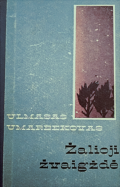 Authors:
Authors:
Umarbekovas, Ulmasas
Translated by:
Kobeckaitė, Halina
Translated from:
Uzbek
Published on:
1975
“Education isn’t hard. Being human is hard.” – a phrase told more than twice in the book that sums up the idea behind Ulmas Umarbekov’s novel “The Green Star” (alternatively known by its original title “It Is Hard to Be Human”). It is a coming-of-age-type of story where the biggest focus is on two of its characters, Abdullah and Gyulchehra, centering heavily on the dynamics and change, as well as the fate of their relationship. More
 Authors:
Authors:
Aitmatovas, Čingizas
Translated by:
Šulcaitė, Vilija
Translated from:
Russian
Published on:
1973
The novella tells an unforgettable story about a seven-year-old boy and San Tao cordon’s residents. This story will not only transport to a wonderful nostalgic world of childhood full of pure and bright memories, but will also introduce the Kirgiz culture and show the peculiarities of the gloomy Soviet life. This story is not consecutive — it distances itself from the main theme because even more enlivening nature (mountains, forests, lakes, marals, etc.) descriptions, that we see through the More
 Authors:
XIV Dalai Lama, Hopkins, Jeffrey
Authors:
XIV Dalai Lama, Hopkins, Jeffrey 
 Translated by:
Kugevičius, Algirdas
Translated by:
Kugevičius, Algirdas  Authors:
Tsongkhapa, Je
Authors:
Tsongkhapa, Je  Authors:
Hopkins, Jeffrey, XIV Dalai Lama
Authors:
Hopkins, Jeffrey, XIV Dalai Lama  Authors:
Rabindranath Tagore
Authors:
Rabindranath Tagore  Authors:
XIV Dalai Lama
Authors:
XIV Dalai Lama  Authors:
Umarbekovas, Ulmasas
Authors:
Umarbekovas, Ulmasas  Authors:
Aitmatovas, Čingizas
Authors:
Aitmatovas, Čingizas